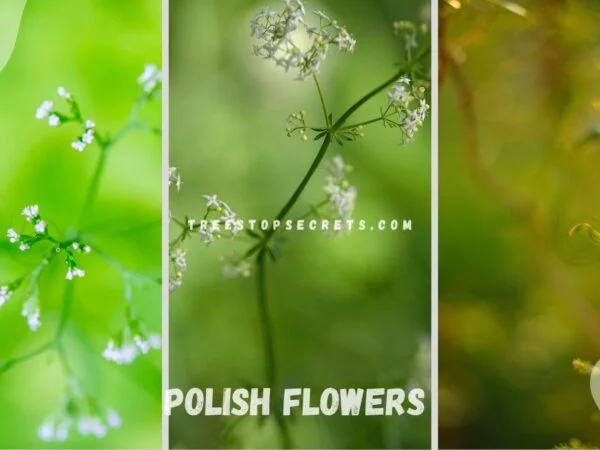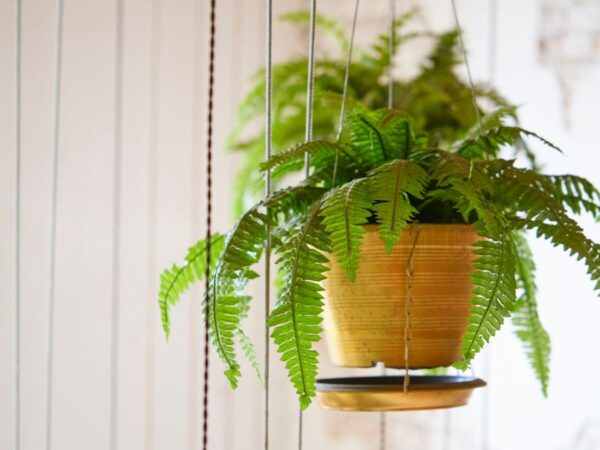Understanding flowers’ names will help you appreciate everything in your garden and the natural world around you even more. The sky is the limit when it comes to flower species—think colorful tulips and sophisticated orchids. Every variety has its own special attributes and maintenance needs.
Recognizing these names helps in selecting the right plants for your garden, understanding their growth habits, and enjoying their beauty in various settings. Whether you are an enthusiastic gardener or just beginning to explore the world of plants, familiarizing yourself with flowers' names offers practical benefits.
In the following sections, I’ll share insights into some popular flowers, their care tips, and how they can brighten your spaces. Understanding these factors will equip you to be a more educated consumer and create beautiful, impactful floral experiences that enrich your world.
Key Takeaways
- Grasping flower name meaning is important for anyone looking to identify, grow, or nurture any bloom. It deepens our understanding of their ecological roles and cultural significance. Understanding these common and scientific names will make you a better gardener and help you engage with other plant lovers.
- Religion and local customs have a huge impact on how varied flower names are today. This diversity will deepen your appreciation of flowers’ cultural relevance throughout society around the world and provide insightful advice to inform your own gardening practices.
- The fascinating historical background of flower names shows how they have dramatically changed over the years, molded by the impact of notable periods and movements. Getting to know these histories will help you grow a greater appreciation for the flowers you’re growing and the culture that surrounds them.
- Flowers hold symbolic meanings in art and literature, evoking emotions and enhancing storytelling. Looking through these examples is sure to fire your imagination and creativity to adapt them for your own creative pursuits.
- Regional differences in flower name largely reveal the influence of geography on language. Understanding these distinctions will help you develop a deeper love for the blooms in your region.
- Even today, modern practices in flower naming are more about horticultural innovation and advertising tactics than botanical guidelines. Knowing what these trends are can allow you to make more informed decisions while choosing plants that are right for your home garden.
Understanding Flower Names
Names like Rosa rubiginosa, flower names on a whole, are precious commodities. They help so much more in revealing what species to identify them as and how to care for them in accordance with their needs and ecological roles. For instance the “Tiger Lily,” named for the cat’s vivid orange and black stripes, is a direct correlation to its flamboyant look.
Understanding flower names helps deepen our understanding, building respect for the variety of species and their importance to habitats around the world.
1. Importance of Flower Names
Once you know your flower names, it’s so much easier to plant and care for them. Understanding these names is essential for both passionate and professional gardeners and botanists, as it helps ensure clear communication regarding a plant’s specific needs.
Flower names always have an ancient connection to these plants and most come from their ecological functions, for example “Rudbeckia,” which is named after botanist Carl Linnaeus. Culturally, names have huge importance, including the “Chrysanthemum,” celebrated throughout many Asian cultures as a beautiful symbol of the fall season.
2. Cultural Influences on Flower Naming
It’s true that flower names from non-Western cultures add beauty and depth to the linguistic treasure chest. Local customs determine naming patterns, a reminder of how culture continues to mold language even in a changing society.
One great example of this cultural richness is the “Amaryllis,” called by a multitude of names including “Naked Lady” and “Easter Lily.
3. Historical Contexts of Flower Names
Most flower names carry deep historical connotations, many changing their meanings throughout history. Events have influenced naming practices, with some flowers retaining their names for centuries, creating a tangible link to the past.
4. Symbolism in Art and Literature
Flowers have always conveyed various emotions and feelings in paintings, poetry, and stories. From classics that are filled with floral imagery, creating links and feelings that seem to tie us across timelines.
Types of Flowers
Being familiar with the various types of flowers will greatly enhance your gardening experience. It teaches you to make better plant choices for your landscape. There are three main types of flowers: annuals, perennials, and biennials. Every category offers different growing conditions, care needs, and flowering cycles.
1. Annual Flowers Overview
Annual flowers, such as marigolds and sunflowers, die after one growing season. Sunflowers, for instance, come in a variety of colors and usually bloom from late spring to autumn. Planting annuals is the easiest way to introduce instant color into your garden. Their seasonal blooming can help establish a fun and inviting vibe.
Their quick establishment and nonstop flowering make them perfect plants for instant pops of color.
2. Perennial Flowers Overview
Perennial blooms, like peonies and hellebores, grow back stronger with each passing season. They’re an investment that pays off with ongoing beauty. These woodland flowers bloom for just a few weeks in spring. Characterized by their bloom time, for instance, hellebores bloom in late winter or early spring, while asters bloom from late summer through early fall.
Adding diverse perennials to your landscape creates year-round structure and interest. It also lowers maintenance needs by minimizing the need to replant annuals so often.
3. Biennial Flowers Overview
Biennial flowers, such as foxgloves, are a little more complex. They grow leafy greens the first year, bloom and set seed the second, and then die. That two-year cycle can be beneficial when planning your garden. It allows you to stagger blooms and create plenty of color throughout the seasons.
4. Unique Characteristics of Flower Types
Each flower type displays distinctive physical characteristics. Annuals often have flashy but brief blooms, while perennials are known for their bold habits. Biennials, with their two-year growth cycle, provide the best of both worlds.
These beautiful and prolific flowers make incredible adaptations to different climates. They enrich biodiversity and fill invaluable ecological niches in the home garden.
Exploring Iconic Flowers
It’s easy to assume flowers are only pretty petaled things. These iconic flowers are beautiful symbols heavily laden with meaning and history in millions of cultures. Their importance goes far beyond our shores, as some of the varieties have eclipsed stars in their popularization of the global horticulture fad. Knowing the stories behind these flowers deepens our appreciation for them.
1. Origins of Popular Flower Names
Every major flower you can think of has an equally interesting story based on their literal meaning. For example, the chrysanthemum comes from the Greek roots “chryos,” or gold, and “anthemon,” or flower.
Even some of the most notable flower names were inspired by historical figures. For instance, rose was a common name for babies almost up to the 20th century.
Flowers such as the daffodil have names laden with cultural influence, showcasing their ageless nature and popularity.
2. Meanings Behind Famous Flowers
Each flower is associated with certain traditional meanings which can be interpreted greatly differently depending on culture. While roses symbolize love, peonies — popular in shades of pink and white with flowers as large as 10 inches across — are thought to bring prosperity.
During ceremonies, flowers like the yarrow were even used in the Middle Ages to create beer, showcasing their historical significance.
3. Lesser-Known Flowers and Their Stories
For every iconic, familiar bloom, there are some lesser-known beauties that are just as dangerous, particularly the Giant Hogweed. This most impressive plant can reach heights of up to 16 feet.
These flora often constitute critical ecological niches, bolstering biodiversity. Trekking among these emblematic blossoms enriches our floral appreciation while empowering us to develop a more profound connection to the natural world around us.
Regional and Linguistic Variations
Doing so opens up a world of symbolic cultural meaning. Flower names aren’t just arbitrary names—they’re reminders of the specific histories, religions, and landscapes of places around the world.
1. Naming Conventions Across Cultures
A cross-cultural examination reveals shared narratives and patterning in floral nomenclature. For example, roses are commonly associated with love, while lilies can denote purity. Cultural beliefs play a huge role in these classifications.
In Japan, the cherry blossom, or “sakura,” represents the ephemeral quality of life, expressing profound cultural philosophies. In English, people tend to refer to the flower with little context, just calling it a “cherry blossom.” This nickname robs it of its cultural significance.
Such variances are a perfect example of what it means for flowers to have entirely opposing interpretations when viewed through the cultural prism.
2. Language Differences in Flower Names
When the flower names are considered in different languages, well-known species take on a largely different life. The daisy—“marguerite” in French—calls up something else entirely. These translations can have powerful effects, like reframing the narrative around the issue at hand.
For example, a very simple flower that might just be about beauty or resilience in one culture. Yet even accurately translating flower names comes with difficulty, as many of the meanings do not easily transfer through language, making intercultural communication a daunting task.
3. Environmental Influences on Flower Nomenclature
Climate and habitat influence flower naming as much as culture does. The California poppy, by contrast, grows best in dry, well-drained conditions. Its dynamic golden color captures that brilliant sunshine found all over the state’s tropic-tinged vistas.
The names always tell you where the flora came from, marrying flowers to their habitats, and showcasing local biodiversity.
The Role of Folklore and Myths
Folklore and myths largely contribute to our common perception of flower names and their meanings. These narratives offer rich insights into how cultures perceive flowers, often reflecting deeper values and beliefs embedded in their societies.
1. Myths Shaping Flower Names
Folklore has long played a role in explaining how flowers got their names. Our daffodil has particular resonance with the Greek myth of Narcissus. His extraordinary beauty enchanted him, to the point that he became enamored with himself.
This folklore and myth heavily shape how cultures interpret the flower—usually as a symbol of vanity and beauty. In the same way, the rose, found in a multitude of other myths, represents love and passion in cultures all over the world, amplifying its importance.
2. Local Legends and Their Impact
Regional legends take particular flowers into account, too. For example, the California poppy is connected to Native American folklore that honors its brilliant hue and adaptability.
These legends influence local practices and community lore, with festivals such as California’s California Poppy Festival emphasizing the flower’s role in the cultural history of the area. These celebrations do more than pay homage to this specific flower; they build bridges between communities and celebrate collective cultural heritage.
3. Folklore in Flower Symbolism
Folklore further enriches the symbolic meanings of flowers. The lily, for instance, is traditionally a symbol of purity and rebirth, a legacy of its use in numerous ceremonial religious rites.
Each flower—especially culturally significant ones such as the sunflower—has meanings of adoration and loyalty, shaped by storytellers generations ago. These symbols are deeply engrained in folkloric celebrations, from weddings to harvest festivals, further cementing the flowers' social and spiritual importance.
Modern Naming Practices
These modern trends in naming flowers represent a beautiful mixture of honoring tradition while embracing innovation. Horticulturists have to constantly revise their naming practices to strike a balance between making things clear and keeping these names trendy.
With every new batch of hybrids, they hit on names that suit the science while striking a chord in the public imagination. Intuitive naming helps with quick plant identification, ensuring that gardeners and plant enthusiasts can communicate clearly about varieties. Botanical gardens are indeed at the forefront of pushing forward these names.
Beyond that, they frequently double as outdoor educational centers where visitors learn to appreciate the significance of each flower’s name.
1. Horticulturists' Approach to Naming
Here is where horticulturists get a little more serious. They don’t name new flowers on a whim. Here’s where the breeders start to think not just about the genetic lineage but what name will make a flower more successful on the market.
Unambiguous naming is essential for the proper identification of native plants, especially in the case that multiple similar species might be confused with one another. Botanical gardens can be a key component to this effort through well-labeled, attractive displays of garden-worthy flowers.
This builds public understanding and support for new names.
2. Botanical Characteristics Influencing Names
Heritable features of flowers have an undeniable impact on modern naming choices, often leading to homogenization. Characteristics such as color, shape, and size frequently find their way into the naming convention.
Like with the ‘Bluebell,’ which evokes the flower’s blue color and bell-like shape, the ‘Giant Sunflower’ name directly identifies the species’ striking size. This kind of straightforward naming helps gardeners immediately choose and surround themselves with plants that satisfy their creative preferences.
3. Commercial Influences on Flower Naming
The floral industry plays a huge role in directing naming practices. Branding is an important component here. Catchy names can make a flower more attractive to sellers in big box stores or grocery stores.
The current trend is from consumer trends, with names like ‘Sweetheart Rose’ aimed at capturing the feeling of love and selling more flowers.
Rare and Unconventional Flower Names
Diving into uncommon or unique flower names is an aromatic entryway into the strange and beautiful world of flora. These unusual floral monikers celebrate the diversity and beauty of a wide range of species, often weaving in tales and cultural connections.
Knowing why they’re special deepens our gardening experience and enjoyment of the natural world around us.
1. Examples of Unique Flower Names
This flower captivates with its dark, almost black petals and a scent reminiscent of chocolate. It gets its name from its deep color and spice-scented character.
Known for its unusual shape resembling a monkey's face, this orchid thrives in the cloud forests of Ecuador, illustrating the biodiversity of its habitat.
Corpse Flower (Amorphophallus titanum): Famous for its unpleasant odor, this giant flower attracts attention not only for its size but for its unique reproductive strategy.
These flowers stand out not just for their appearance but for the stories behind their names, often reflecting cultural or historical narratives.
2. Stories Behind Rare Flower Names
The Chocolate Cosmos originated in Mexico, where they were widely grown for their striking beauty and sweet, rich scent.
The name of the Monkey Face Orchid comes from the local folklore that recounts its distinct facial appearance, making it even more intriguing.
Detailed stories accompany each name, enriching our understanding of the botanical life represented here.
3. The Evolution of Uncommon Flower Names
Flower names change with societal shifts, sometimes due to globalization.
The Corpse Flower has taken on a different meaning around the world. It has undergone a transformation from symbol of decay to one that ignites curiosity and fascination.
This long evolution is illustrative of how our relationship with nature changes over time.
Conclusion
Understanding the natural world behind flower names reveals an astonishingly rich world of beauty, history and meaning. Along the way you learn the story of every one of those blooms. Identifying different types of flowers enriches the experience of gardening and gift giving. The regional names enrich your understanding of local culture and traditions. Myths and folklore add a rich layer to these plants. By adopting more contemporary naming practices you position yourself among those familiar with what’s current and trending. Exploring unusual names brings a distinctiveness to your floral lexicon. Take this new knowledge and experience and learn to appreciate flowers at a deeper level. Share it with your friends or use it to plan your own garden. Take this vibrant trip around the world and allow the magic of blooms to move you daily.
Frequently Asked Questions
What are the most common types of flowers?
The most common flowers are roses, tulips, daisies, lilies, and sunflowers. Each has such distinct traits and meanings that it’s no wonder they’re each an ideal choice for so many different occasions.
How do flowers get their names?
With cultural and historical significance Flowers are frequently named after various qualities, such as their appearance or point of origin. Botanical naming is a highly ordered process, employing Latin and Greek roots to create the most specific directive possible.
Are there flowers that symbolize love?
Indeed, hundreds of flowers represent love in all its different forms. The red rose is arguably the most famous flower in the world, symbolizing intense love and passion. Peonies are another bloom that has love meanings, as well as lilies.
What are some rare flower names?
Rare flower names like Corpse Flower, Ghost Orchid, Encephalartos woodii. These flowers can be unusual in shape or exceptionally rare, often drawing the attention of plant connoisseurs and collectors.
How do cultural differences affect flower names?
Cultural differences play a big role in how flowers are named. For instance, one flower could have numerous meanings or names when translated into other languages based on the culture’s history and inherited practices tied to that flower.
What role do myths play in naming flowers?
Myths further fuel the practice of flower naming by associating them with gods or myths. For example, the daffodil is a symbol of rebirth in many cultures because it blooms in spring.
How can I learn more about flower names?
There are many ways to learn about flower names, from gardening encyclopedias to online databases and even local botanical gardens. Websites like ProFlowers offer in-depth guides to different species and what their significance might be.
Image Source: Paid image from CANVA





